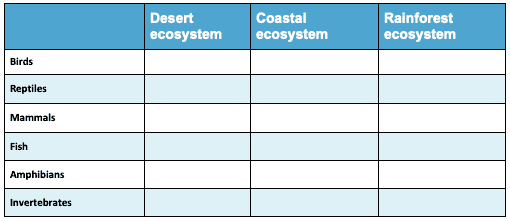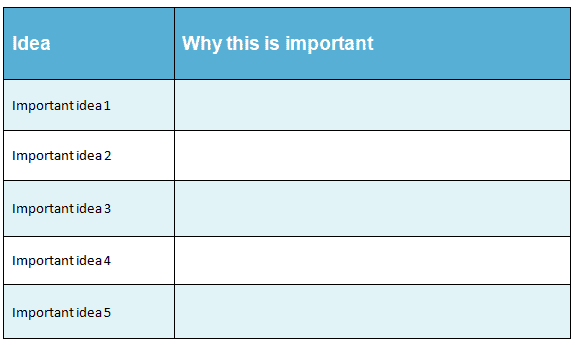Information for Teachers
Curriculum links
This investigation is linked to the following Grade 4 Next Generation Science Standards.
LS1.A: Structure and Function
Plants and animals have both internal and external structures that serve various functions in growth, survival, behavior, and reproduction. (4-LS1-1)
LS2.A: Interdependent Relationships in Ecosystems
The food of almost any kind of animal can be traced back to plants. Organisms are related in food webs in which some animals eat plants for food and other animals eat the animals that eat plants. Some organisms, such as fungi and bacteria, break down dead organisms (both plants or plants parts and animals) and therefore operate as “decomposers.” Decomposition eventually restores (recycles) some materials back to the soil. Organisms can survive only in environments in which their particular needs are met. A healthy ecosystem is one in which multiple species of different types are each able to meet their needs in a relatively stable web of life. Newly introduced species can damage the balance of an ecosystem. (5-LS2-1)
ESS2.E: Biogeology
Living things affect the physical characteristics of their regions. (4-ESS2-1)
How to search the internet
1 Keep your request short
Fewer words will give a more accurate search.
2 Choose exactly what you want
For example: Arctic Circle Climate
3 Use quotes
Double quotes around a set of words tell the search engine to consider those exact words in that exact order without any change. For example: “Arctic Circle Climate”
4 Use the plus sign (+)
If you add a plus sign (+) between words, the internet will search for all the words. For example: migrate+birds+whales+mammal
5 Use the minus sign (–) to say what you don’t want
Use a minus sign (–) to show words you do not want to appear in your results. For example: if you search for burrowing animals and do not want mammals in your search, –mammals will exclude mammals. Note that you need to put a space before the minus sign for the word to be excluded.
6 Be very clear about what you don’t want
Part 1
Ask questions and define problems
After reading Nature’s Rooming House, you may have many questions about the ways in which huge numbers of living things form ecosystems around different types of trees.
List your questions
- Compare your list with questions that others have.
- Choose a question you would like to investigate.
- You can work alone, with a partner, or in a small group.
You may want to choose one or more of these questions to investigate
Q1. Think about other large ecosystems that you know. There may be some near where you live. Do some investigations about nature’s rooming houses in the area or state where you live.
Q2. Find out about threats to some of nature’s rooming houses. What is happening to the trees/plants that maintain these ecosystems that help so many other forms of life live and thrive?
Go to Part 2 Investigate →Part 2
Investigate
Helpful websites
You may want to use websites to help you’re your investigations.
Helpful search words include:
Earth+matters
Forests+important
Nature+animals
Desert+cactus
Habitats+ecosystems
Rainforests
Go to Part 3 Record data →Part 3
Record data
Find a way of recording your information that will allow you to see any patterns in the data.
Data Chart for comparing ecosystem animals
 Download Chart
Download Chart
Go to Part 4 Organize, analyze, and interpret data →
Part 4
Organize, analyze, and interpret data
1. Look over the information you have gathered and the patterns you have found.
How are things similar? How are they different? Why is this?
2. Search for other patterns.
Are these what you expected to find? Why?
What might happen if a predator was introduced?
3. Makes notes about what you find.
Go to Part 5 Present and share →Part 5
Present and share
Look over all of the information that you have gathered in your investigation.
What are the most important ideas about your topic?
Make a chart showing the most important ideas. Put the most important first and the least important last.
 Download Chart
Download Chart
← Return to menu